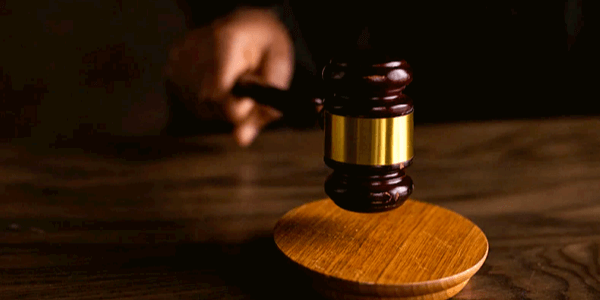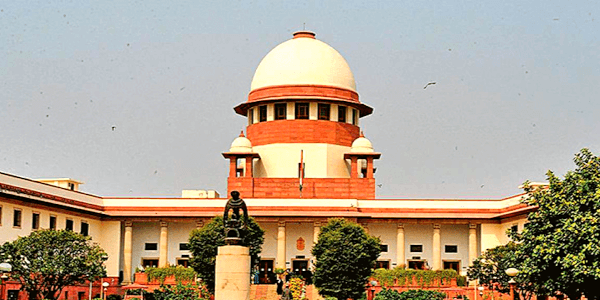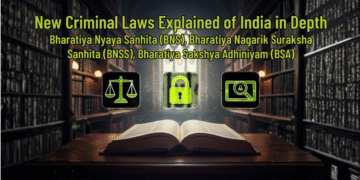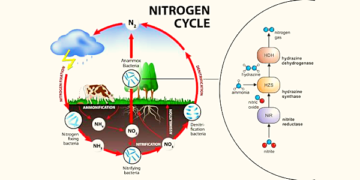The judiciary is the branch of govt responsible for interpreting the law, resolving disputes, and providing justice to all citizens. We have an independent judiciary in India. The government’s other organs are not allowed to interfere with the judiciary’s work. It is an important topic for the Indian Polity subject of the IAS Exam (UPSC GS -II). This article will provide you with important information on the Indian judiciary (Court), including the types of courts in India, their functions, and the judicial system in India. So, let’s get this started.
Indian Courts or Judiciary: Introduction
- The judiciary is a separate entity that upholds and preserves the rule of law.
- Other government organs, such as the administration and legislature, shall not obstruct the judiciary’s ability to function.
- India’s legal system organizes as an integrated judiciary, with a Supreme Court that oversees the entire country, High Courts in each state, & District Courts, and municipal courts.
- The Supreme Court is in charge of judicial administration, and its decisions are binding on all other courts in the country.
Role of Judiciary
India’s Supreme Court is the country’s highest court. However, we must first comprehend the role of the legal system. In India, courts are in charge of dealing with and making decisions on a variety of matters, such as how a school should treat pupils or whether two states can share resources, among other things.
The courts can also punish people who commit crimes. The judiciary is in charge of almost any social issue that requires a rule, such as
- When a conflict arises, the courts step in to help resolve it. The Court is responsible for resolving disputes between citizens, citizens and the government, two state governments, or even the federal and state governments.
- The judiciary ultimately decides India’s Constitution. As a result, if the Constitution’s essentials are violated, the Court has the power to overturn legislation passed by Parliament. Judicial Review is the name for this process.
- Our Constitution defines almost all of the fundamental rights of Indian citizens. Citizens can go to their local high courts or the Supreme Court if they believe their rights have been violated.
Before we get started, let’s have a look at another essential UPSC topic: Indian Constitutional Morality. This link will give you all the necessary information and details to assist you in your exam preparations. First, we’ve discussed India’s judicial system. Let us now look at the various types of courts and their functions in the Indian judiciary and other imp information.

Types or Structure of Court in India
The Indian Constitution divides the state’s powers into three categories (types): executive, legislative, & judicial. The executive is responsible for putting laws into operation, the legislature is responsible for enacting laws, and the judiciary is responsible for resolving disputes.
In India, there are various levels of the judiciary and different types of courts depending on the tier of jurisdiction, with the Supreme Court at the top, followed by the High Court in each state, district judges in District courts, magistrates of the second class, and civil judges (junior division) at the bottom.
There are three types or levels of Courts in India:
Supreme Court
The Supreme Court of India is the country’s highest court and is situated in Delhi. The Supreme Court of India (Supreme Court) was established on January 28, 1950. The “Chief Justice of India leads it.”
The Supreme Court consists of 30 judges who can serve until they reach the age of 65. The Supreme Court also protects the Indian Constitution. Individuals who break the law are also subject to punishment. In addition, the Supreme Court has the authority to arbitrate disputes between the country’s 25 High Courts.
High Court
At the state level, it has been established. In India, there are 24 different High Courts. The oldest, the Kolkata High Court, was founded in 1862.
Civil and criminal trial courts and tribunals oversee the operation of all High Courts. All High Courts are overseen by the Supreme Court, which hears any disagreements.
District & Session Court
Such courts have been set up at the district level. These courts deal with disputes, fights, and other issues that emerge inside the district.
The district court is superior to the lower courts. All district and subordinate courts report to the High Court.
Aside from that, the legal system is divided into two branches: Civil Law and Criminal Law. Moreover, the rules for each of these laws differ from one another. As the highest judicial authority, the Supreme Court is responsible for both civil and criminal matters.
- Civil law: on the other hand, it deals with disagreements that arise when a citizen’s Fundamental Rights are violated. The parties involved then file a petition with the appropriate Court. Finally, the Court resolves the disagreement by providing a solution and a decision.
- Criminal law deals with citizen misbehavior that is classified as an offense or crime by the law. A criminal case begins with filing a report with the local police department, which subsequently initiates an investigation. The Court finally decides the matter.

The Function of Indian Court/ Judiciary
The Indian court or judiciary performs the following functions:
To give justice to the people:
The judiciary’s primary job is to apply the law to specific cases or to resolve disputes. When a case is brought before the courts, the evidence produced by the competitors is used to “determine the facts.” After then, the law determines which law applies to the situation and applies it. Finally, the Court will impose a penalty on someone who is found guilty of breaking the law during the trial.
Judge-made law:
Judges are frequently unable or unwilling to determine the proper law for application. In such instances, judges use their judgment and common sense to determine what the right law is. Judges have accumulated a large body of ‘case law,’ or ‘law established by judges,’ as a result of their actions. The doctrine of stare decision states that prior judicial rulings are binding on subsequent judges in comparable instances.
Equity Legislation (law enactment) Indian court:
When a law is silent or unclear or appears to be conflicting with another law of the land, judges must rely on their sense of justice, fairness, impartiality, honesty, and knowledge to make decisions. Such judgments almost invariably necessitate the enactment of legislation. Equity legislation is the usual name for it.
Rights Protection:
The Court bears the highest responsibility for safeguarding people’s rights. A citizen has the right to seek court protection when the government, private groups, or other people violate or threaten to violate his or her rights. It is the job of the judiciary to protect people’s rights in all of these situations.
Supervisory functions:
In India, the higher courts are also responsible for monitoring the lower courts.
Advisory functions:
In India, the SC also serves as an advisor. It has the ability to provide constitutional advice. This is done when there are no conflicts, and the executive wants it.
Non-judicial and administrative functions:
The Indian courts perform a variety of non-judicial and administrative activities. The Indian courts have the right to grant licenses, administer estates, and appoint receivers. Marriages are registered, and guardians for minor children and lunatics are appointed.
A special role in a federation:
In a federal system like India’s, the judicial system is also responsible for resolving crucial issues between the center and the states. It also serves as a mediator in inter-state issues.
Conducting judicial inquiries:
Judges are frequently appointed to lead commissions that investigate public servant errors or omissions cases.
Other Functions:
In addition to the major functions listed above, the judiciary also conducts a variety of other tasks. The appointment of local court officials and the selection of clerical and other staff are examples of such tasks. Cases involving the grant of licenses, patents, and copyrights, the appointment of guardians and trustees, the admission of wills, the appointment of trustees to look after the property of minors, the problem of handling the estates of the deceased, the appointment of receivers, naturalization of aliens, marriage and divorce cases, election petitions, and similar matters.

Conclusion- Indian Courts
The Indian Court or judiciary has been explored in this article. We discussed the role and functions of the Indian judiciary and the many types of courts in India, and other details. They are a key aspect of India’s judicial system and hence very relevant for the UPSC test in terms of Indian polity. So go ahead & read the whole thing. You can also discover more about the exam by visiting the UPSC’s official website.
FAQ- Indian Courts
There are 25 high courts in India, 6 of which have jurisdiction over multiple states or union territories. Among the Union Territories, Delhi has its own High Court. A Chief Justice and such other justices as the President of India appoints shall make up each High Court.
The Supreme Court of India, High Courts, & subordinate courts at the district, municipal, & village levels make up the Indian judicial system.
The Calcutta High Court is the country’s oldest High Court. The state of WestBengal & the Union Territory of the Andaman & Nicobar Islands is under its administration.

Editor’s Note | Indian Courts
This article has focused on the Indian judicial system or judiciary. We talked about the Indian court’s judiciary role and functions, as well as the type of Indian courts and other aspects. As previously stated, this material is critical for UPSC preparation; thus, take notes while reading. Study each day as if it were the first, and plan with the same level of dedication and focus. It’s essential to keep in mind that consistency is crucial—finally, best wishes to you.







